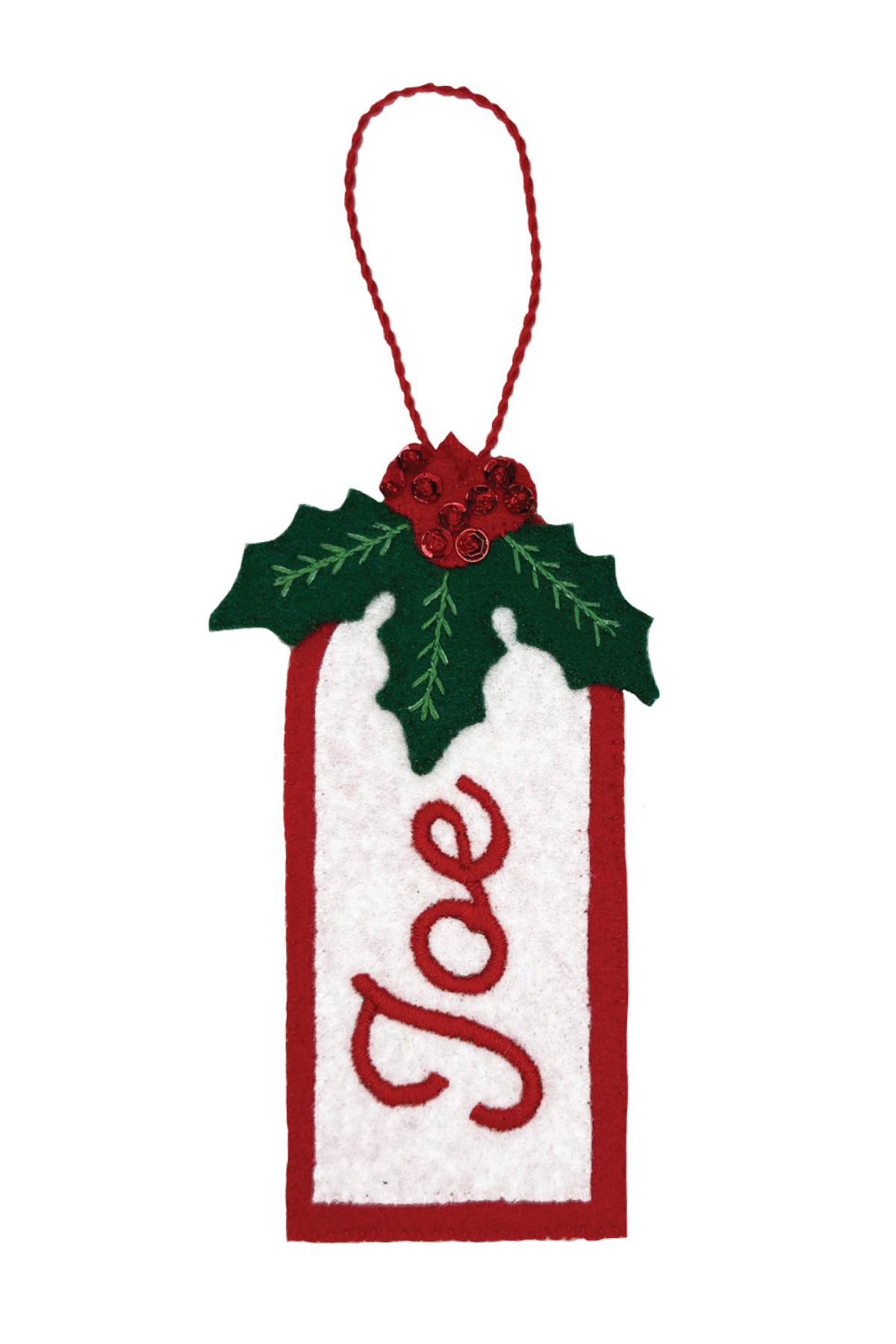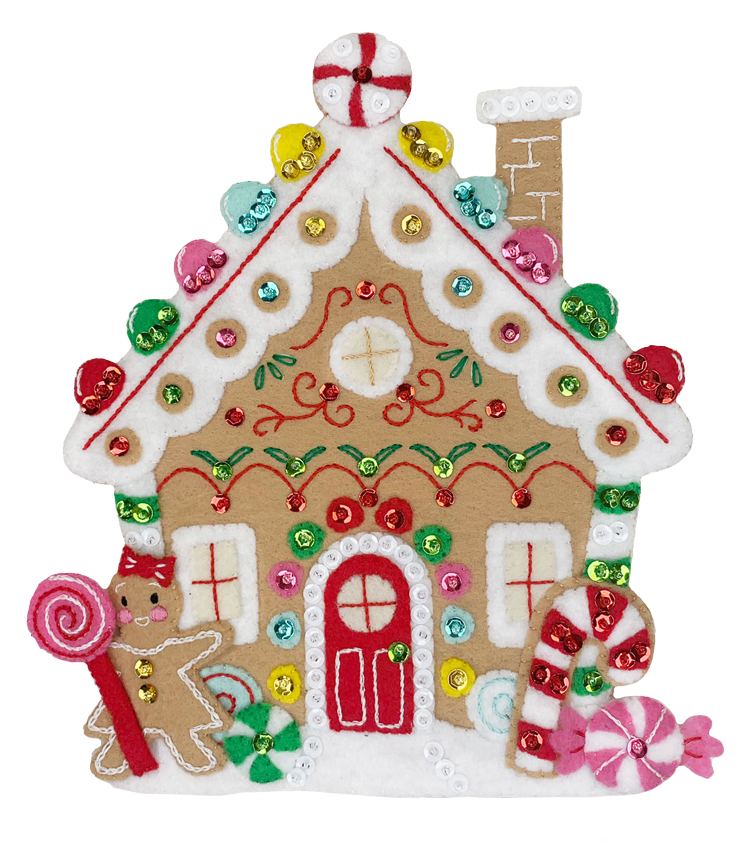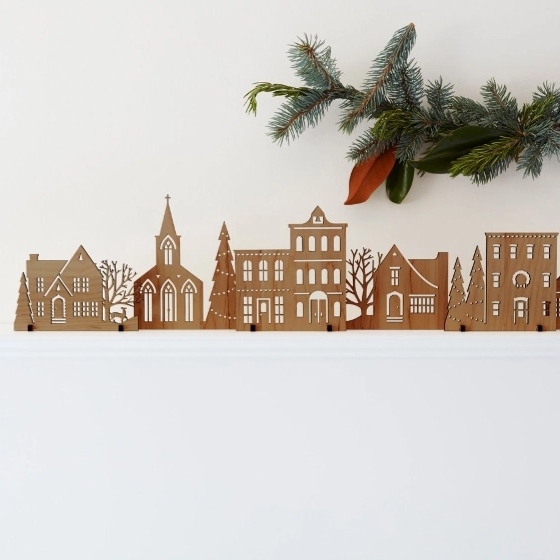My First Bucilla Felt Stocking Kit: Embroidery Stitches 102

Posted on February 20, 2021

In my last blog I talked about the embroidery stitches that are used in my Jolly St. Nick Bucilla felt appliquè stocking kit. They were the Straight Stitch, the Running Stitch, the Outline Stitch, and the Back Stitch. Now, I’m going to talk about some more embroidery stitch used on Bucilla felt kits.
In this blog, I’m going to illustrate the Satin Stitch, the Lazy Daisy Stitch, the Chain Stitch, and the Blanket Stitch.
Satin Stitch
I think of the satin stitch as sort of a “filler” stitch, because it uses many straight stitches to fill in a shape.
To satin stitch, you start at one end of the shape, making straight stitches in the same direction and very close together so you do not see any felt between the stitches. You just keep creating straight stitches until the shape is filled with floss.
Lazy Daisy Stitch
The Lazy Daisy Stitch is often used to make a petal shape in Bucilla kits. If you search online, you can find many tutorials on making this stitch. I am showing you only one way (which is also the beginning stitch of the chain stitch below). I found that by making the anchor stitch that holds down the loop first, I can get a more accurate loop that covers the line printed on the felt.
So, first create a tiny anchor stitch at the top of the petal shape. Then bring the floss up through the bottom of the petal shape, then slide your needle and floss through the anchor stitch to make a loop, bringing the stitch back down at the same point you started.
Chain Stitch
The Chain Stitch is making a line of Lazy Daisy Stitches that end up looking like a chain. The Sugar Plum Fairy Bucilla felt stocking kit uses a chain stitch as a white outline around the gingerbread figures. I know there are many ways to create a chain stitch, but I found this method online which works the chain stitch backwards. I think it is really easy, so I’m passing it along to you.
Like the Lazy Daisy Stitch, begin by creating a small anchor stitch at the beginning of the line you want to embroider. Move your needle down the line and come up to start creating the petal shape stitches that make up the chain stitch. Slide your needle through your anchor stitch and bring the needle back down at the same spot you started. Next, move your needle down the line and come up to create the next petal shape stitch, trying to space the stitches evenly. For this stitch, you slide your needle through the last chain stitch you made, and bring the stitch back down where you started.
Blanket Stitch
The Blanket Stitch is a decorative way to secure two pieces of felt together or to finish an edge. The stitch creates a line of floss that runs the edge of the fabric.
To start a blanket stitch, bring your needle up through the top felt piece only (about a ¼ of an inch from the edge), so you can bury the knot between the two layers of felt. Loop around the edge of the felt and come up through both layers of felt (you are creating an anchor stitch). Now slide your needle through this loop, so you are starting with the floss strung through the loop. This is your anchor stitch.
Next, bring your needle down through both layers of felt about a ¼ of an inch away and the same distance (about a ¼ of an inch) from the edge to start the next stitch. The key to making the blanket stitch is to make sure your needle is IN FRONT of the loop you are creating when you pull the stitch tight. This creates that line of floss that runs along the edge of the felt seam. When you pull the stitch tight (but not too tight), your floss should once again be through the loop you made. Keep repeating steps 4 and 5, working to keep your stitches even. Remember to keep your needle in front of the floss loop when pulling your stitch tight.
I’ve been working away at my Jolly St. Nick Bucilla stocking kit. It is fun watching the design come to life. I’ve done a bit of stuffing of the pieces, and I am learning the fine art of making my appliquè stitches evenly spaced. The nice thing about felt appliquè is that the felt is very forgiving. I have made a few mistakes, but I was easily able to pull out the floss and try again.
There are still more embroidery stitches to learn! I will keep on ticking through the stitches used in Bucilla kits. - Kirsten










